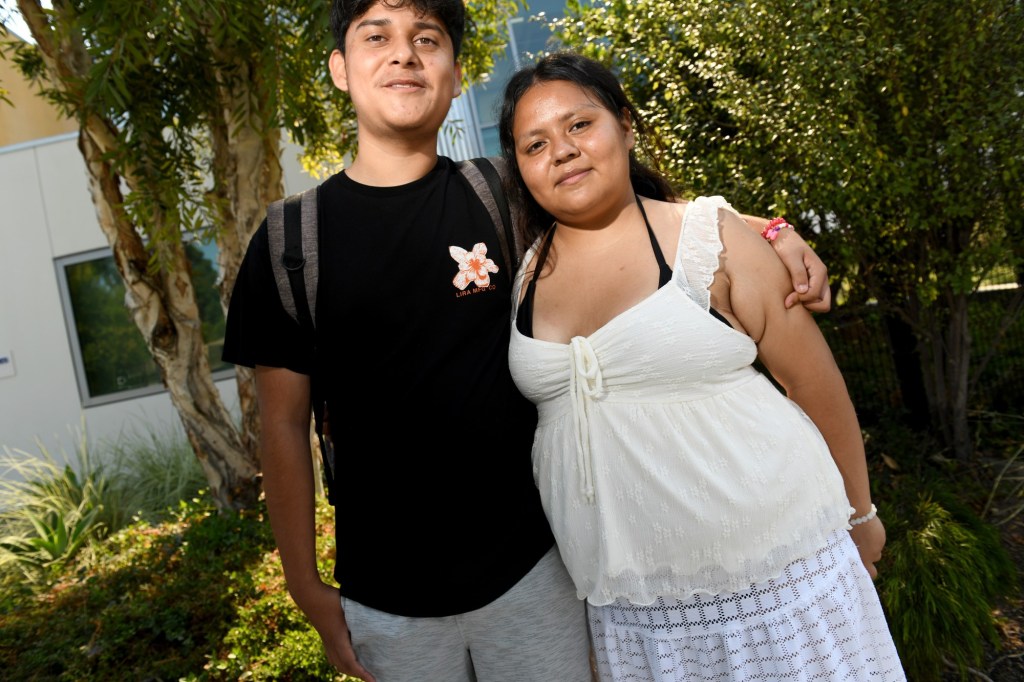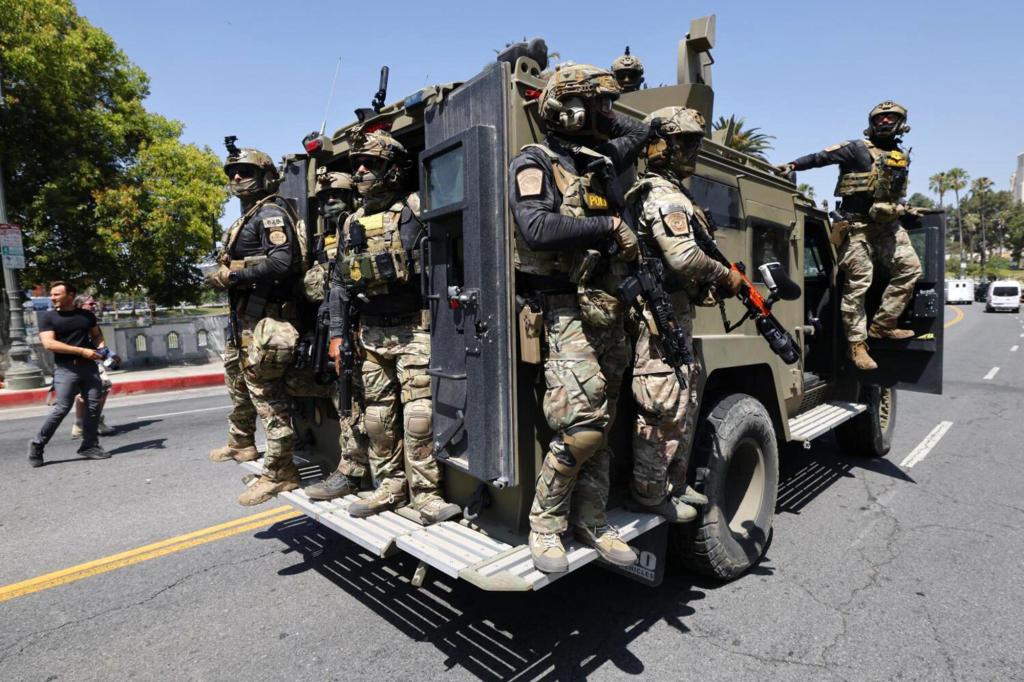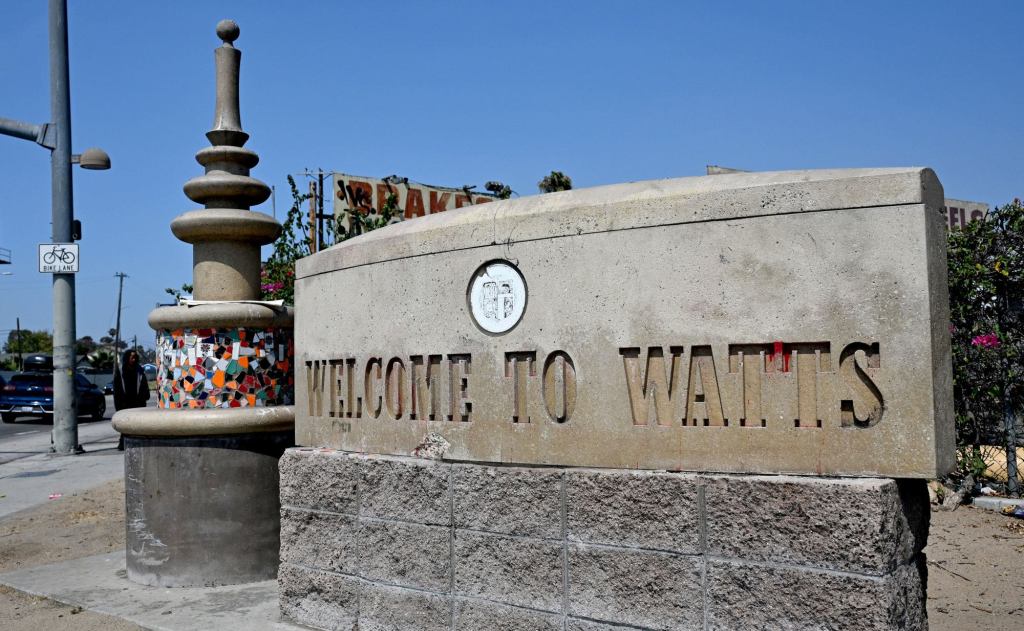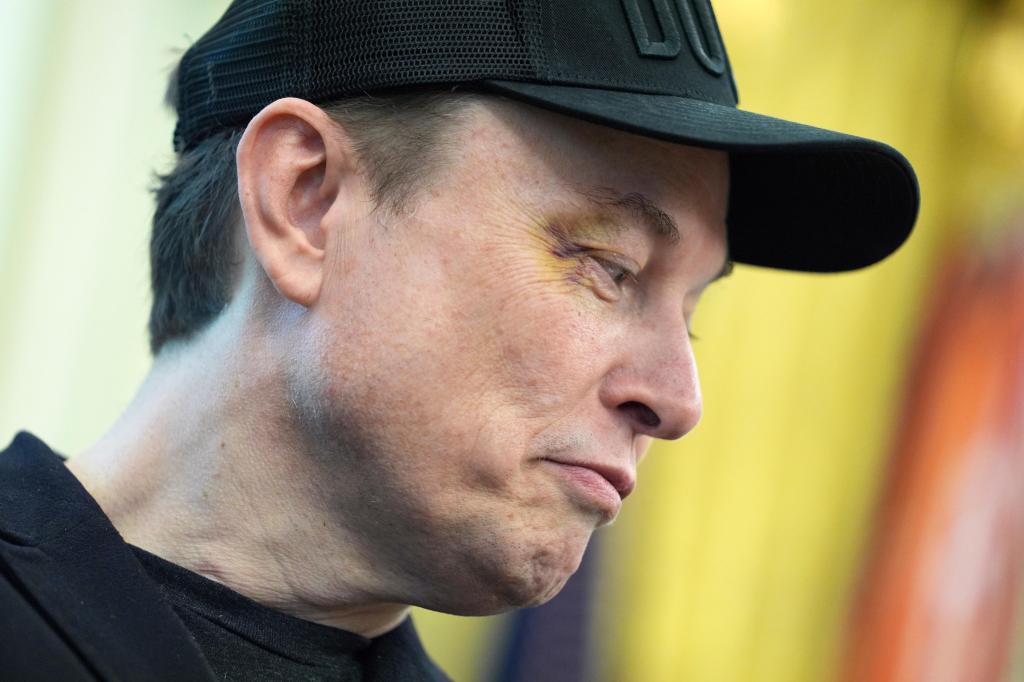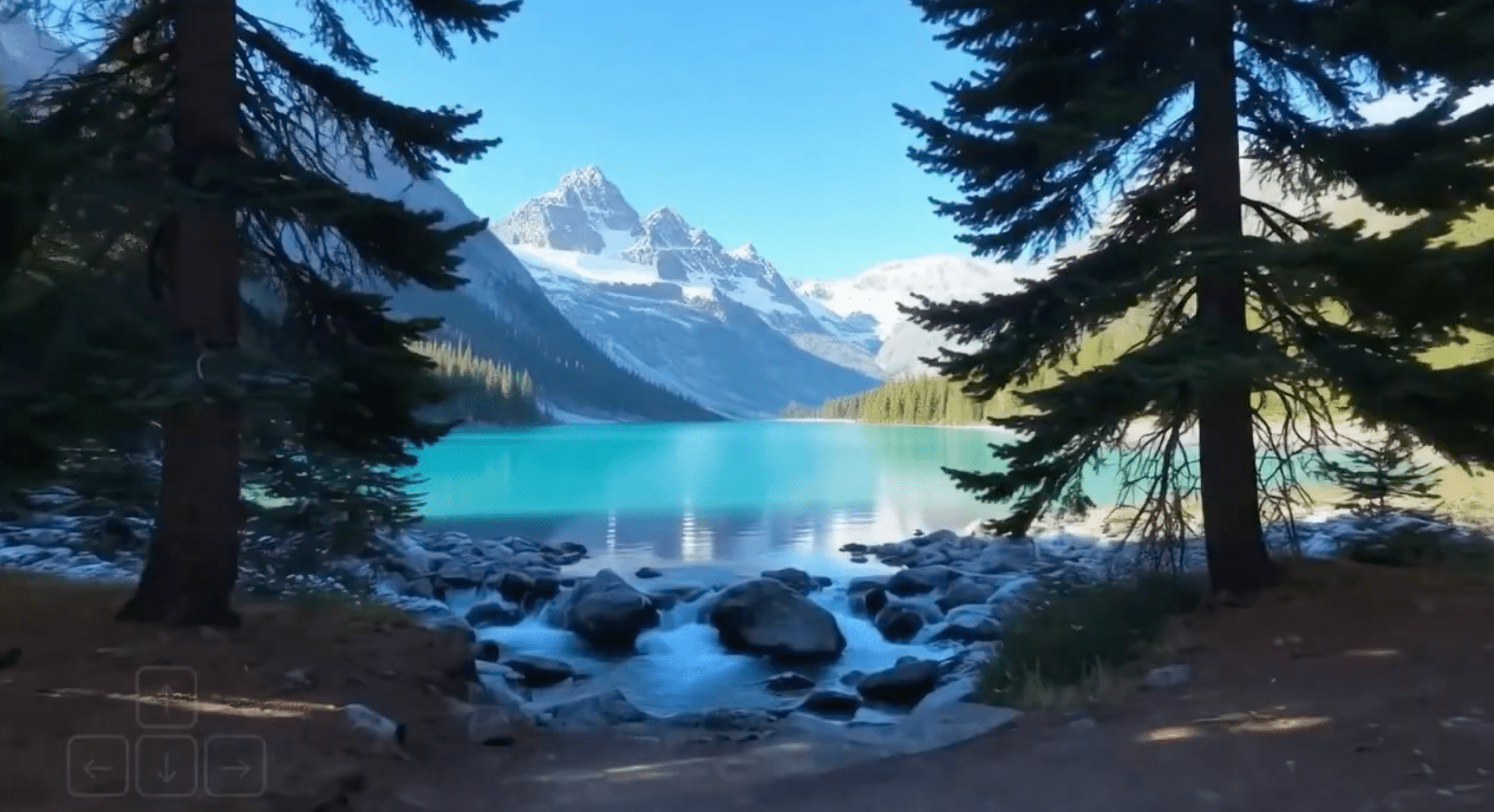Lindsey Hernandez grew up in Imperial Courts, one of Watts’ largest public housing complexes.
Some nights, the 17-year-old woke up to the sound of gunfire, sometimes to news that someone had died. But what she remembers most is the warmth: neighbors who hugged her when she shared good news, elders who prayed over her, and the feeling of being deeply cared for.
“I feel like people just focus on that (the violence),” she said, “and it’s not just that.”
Sixty years after the Watts Riots (sometimes referred to as Watts Uprising or Watts Rebellion), young people like Hernandez are still navigating a community shaped by the legacy of injustice, and by their own determination to refine it.
Hernandez, whose family moved to Watts when she was 2, said she didn’t know much about the 1965 unrest. But through community programs, she’s learned about how it shaped the neighborhood, and how many of the same challenges still affect residents today.
“My community was hurt and … they’re still going through a lot of the stuff that happened back then,” she said.
Public safety, she said, remains one of those challenges.
She said she would “like having a little bit more safety here, just a little bit more safety. But we’re already trying to work on that too. So I think in the coming years, that should be something that we see more.”
Her concerns echo the past.
On Aug. 11, 1965, a police stop involving 21-year-old Marquette Frye spiraled into six days of rebellion in Watts — an eruption fueled by years of discrimination, over-policing and economic hardship.
“I think the real cause is that Negro youth—jobless, hopeless—does not feel a part of American society,” civil rights leader Bayard Rustin told Time Magazine that year. “The major job we have is to find them work, decent housing, education, training, so they can feel a part of the structure.”
Sixty years later, many young people say they’re still navigating the aftershocks of that history — even if they didn’t grow up hearing much about it at home or in school.
“I feel like that’s kind of a pattern here,” said Melissa Garcia, a high school senior who lives just outside of Watts in the Florence-Firestone area.
“Unfortunately, there isn’t a lot of history that was told about our communities, which is something that should be brought up more often— especially since we do live here,” she said. “It’s very forgotten. We focus on a lot of European-centric history, which should be changed.”
Others echoed that sentiment. While some had picked up bits and pieces in school, many said their first deeper understanding of the Watts Riots came through youth programs, mentors or community leaders — not classrooms or textbooks.
Lorena Martinez, a student at Alain Leroy Locke College Preparatory Academy (formerly Locke High School)— which was founded in 1967 in direct response to the riots— said a professor in one of her enrichment programs helped her understand both the causes of the uprising and how its aftermath still shapes life in Watts today.
“You could see some changes,” the 16-year-old said, “but you could also see history repeating itself.”
She and her classmate Daniel Vega pointed to ongoing police discrimination against young Black and Latino men as one way the past still echoes in their lives.
“When the police gets called for an issue like a car crash, (and) if they see just men around, (the police) immediately have an attitude. Or they get angry and assume that it was a fighting issue or a robbery,” Martinez said.
“I feel like the community is more calm than before, when all that stuff was happening,” Vega said, “It’s changed a lot. But there’s still parts that are affecting the community.”
Other teens shared similar concerns about safety — not just in relation to policing, but in how violence and fear continue to shape daily life.
April Aceituno, 16, who also lives in Imperial Courts, said safety has improved, but there are still places and moments where fear creeps in, especially for young people.
“Now, it’s kind of safer because (things) have calmed down a lot,” she said. “Before you couldn’t go outside ’cause it was dangerous.”
She added that some people — especially outsiders unfamiliar with the neighborhood — still react to Watts with fear. “I feel like that really impacts us,” Aceituno said.
That fear, she said, doesn’t just shape how people see the community, it can also affect the opportunities available to those growing up in it.
Aceituno, who’s transitioning from Simon Technology High School to Jordan Senior High, said she’s seen how supportive school policies can make a difference.
Still, she and others pointed to barriers that go beyond the classroom— from teacher shortages and under-resourced schools to the need for more hands-on training and job prep.
“Sometimes they do lack teachers,” Aceituno said. “Certain teachers wouldn’t come to school and then they would have to bring in substitutes and we wouldn’t do anything in the classes.”
Daniel Vega said more hands-on learning would go a long way in helping students plan their futures.
“I feel like they could do better with giving the students more chances — more programs for internships,” he said. “They can help us out by getting our hands on learning, because not a lot of schools do that.”
Martinez said one such opportunity at her school has already had an impact.
“Recently they started a medical assistant program, which I joined. And actually next Saturday I will be graduating,” she said. “And I can officially work in clinics.”
Despite the challenges, many of the teens expressed a deep sense of pride in their community, and frustration at how outsiders often misrepresent it.
“I feel like the people here show off our community, like we all gather together,” said Jessica Sanchez, a student at Ánimo Pat Brown Charter High School. “Even though our community isn’t the best sometimes, it’s the people that make it united.”
Martinez echoed that sentiment.
“People could look down on Watts, but I prefer being here than being in the suburbs or anything else,” she said. “I got personality from it. I got experience that I don’t think anyone could ever experience—and family that are not even related to me. And that’s the most important part to me.”
That pride isn’t just personal, it’s showing up in how these young people are stepping up for Watts.
All of the teens interviewed are part of the Watts Rising Youth Advisory Group, a leadership program where they learn about civic engagement, community development and environmental justice — and how to advocate for the changes they want to see.
Amy Zavala, a member of the group, said she first got involved after seeing a flyer through College Track, a college prep program that offers students access to internships and summer learning opportunities.
She said it’s been inspiring to see youth take the lead on shaping the community’s future.
“I feel like there’s more youth involvement, more opportunities to bring more green spaces in your community and just more opportunities for sports,” she said. “It’s really nice to see Watts progress as time goes by.”
Lindsey Hernandez said she noticed more young voices being included in local conversions, and believes that matters.
“They do listen to a lot of youth from here,” she said. “This group is an example, because all of us here are trying to better Watts and trying to see how we can collaborate with others around the community to change what needs to be changed.”
Daniel Vega agreed: “ They started listening to younger folks more ’cause of the opportunities and how they say that we’re the future.”
“It starts with the youth,” Lorena Martinez added.
Originally Published:
<
